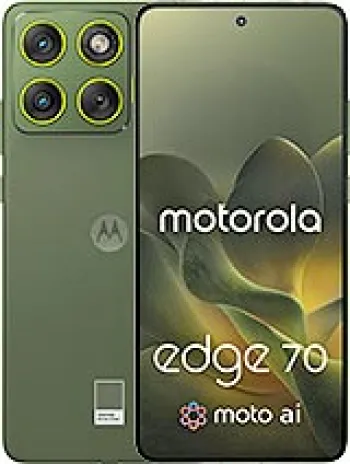
Overview of the Motorola V180
The Motorola V180, released in the first quarter of 2004, is a feature phone that belongs to the era where mobile phones were transitioning from being mere communication devices to integrating more multimedia and connectivity features. As a clamshell phone, the V180 is recognized for its compact design and basic functionalities that cater to individuals who prefer simplicity over the complex features of smartphones.
Design and Build
The design of the Motorola V180 is distinctly clamshell, measuring 86 x 45 x 25 mm and weighing only 92 grams. This compact size makes it highly portable and easy to carry in pockets or small bags. The V180's build was robust for its time, offering a sense of durability despite its lightweight nature. It featured a Mini-SIM card slot and came in a variety of colors including Piano Black, Midnight Blue, Dark Cherry Red, and Purple, allowing for some degree of personalization.
Display
The display of the Motorola V180 employs a CSTN screen capable of showing 65K colors, with a resolution of 128 x 128 pixels. Although the display size is not specified, the resolution suggests a square, compact screen, suitable for basic phone functionalities such as making calls, texting, and navigating simple menus. The display’s color capacity, albeit limited by today’s standards, was vibrant enough for its time, providing a clear view of on-screen content.
Network and Connectivity
In terms of connectivity, the V180 supports GSM technology and operates on the 2G bands across 900, 1800, and 1900 frequencies. It incorporates GPRS Class 10 for basic data services but lacks EDGE capability for faster data throughput, reflecting the standard network technology of its release period. The absence of advanced connectivity options like WLAN, Bluetooth, or positioning systems underscores its focus on more traditional phone features. However, it includes a miniUSB port, providing basic connectivity for charging and potential data transfer opportunities, though limited by the device’s storage constraints.
Memory and Storage
The Motorola V180 is equipped with 1.5MB of internal storage, which in today’s terms is minimal, but sufficient for storing basic information like contacts and call logs. It does not support any form of expandable storage, which aligns with its positioning as a basic feature phone. The phonebook feature allows users to store essential contact information, while call records maintain logs of up to 10 dialed, received, and missed calls each, ensuring users can track recent communication easily.
Battery Life
Powering the Motorola V180 is a removable Li-Ion 860mAh battery (BX200). This battery size delivers an impressive standby time of up to 216 hours and a talk time of up to 5 hours. The removable nature of the battery means users could replace it without needing to replace the entire phone, a feature many appreciated during that era.
Sound and Alerts
The V180 includes a loudspeaker which supports polyphonic and MP3 ringtones. Users could also compose their own tones, adding a personalized touch which was somewhat novel at the time. The phone lacks a 3.5mm headphone jack, which means audio listening is primarily via the built-in speaker or potentially other proprietary accessories.
Communication Features
For messaging, the V180 supports SMS, EMS, MMS, and Instant Messaging, providing users with a multifaceted approach to communication. This conveys its usability in basic mobile communication and modest multimedia messaging, reflecting the gradual shift in mobile phone usage form primarily talk-centric to more diverse communication functions.
Applications and Games
The phone features a WAP 2.0/xHTML browser, allowing users to access the internet at a very basic level. For entertainment, it came pre-installed with games like "Hungry Fish" and "Skipping Stones," and the support for downloadable Java games (MIDP 2.0) provided a doorway to expand entertainment options, albeit within the limitations of its storage and processing capabilities.
Language Support
The V180 offers an extensive language support including English, Russian, Hebrew, Arabic, and Simple Chinese. This wide array of language options made it accessible to a broader demographic, catering to different lingua-cultural groups and enhancing its appeal as a globally usable device.
Conclusion
Overall, the Motorola V180 encapsulates a quintessential design and functionality of early 2000s feature phones. While it doesn't boast the extensive capabilities of modern smartphones, it provides a reliable and straightforward communication experience. Its basic yet functional design, combined with decent battery life and essential communication features, made it a practical choice for users prioritizing simplicity, reliability, and ease of use in communication devices.
Key Features of Motorola V180
- GSM Technology supporting 2G bands (GSM 900 / 1800 / 1900).
- Compact dimensions (86 x 45 x 25 mm) and lightweight (92 g).
- Colorful CSTN display with 65K colors and resolution of 128 x 128 pixels.
- Internal memory of 1.5MB with phonebook capability.
- Downloadable polyphonic and MP3 ringtones.
- Communication via SMS, EMS, MMS, and Instant Messaging.
- Features Java, MIDP 2.0 support, allowing downloadable games like "Hungry Fish" and "Skipping Stones".
- Removable Li-Ion 860 mAh battery with up to 216 hours standby time and up to 5 hours talk time.
- Available in multiple colors: Piano Black, Midnight Blue, Dark Cherry Red, and Purple.
Disadvantages of Motorola V180
- No EDGE support for faster data transfer.
- Discontinued product, making it difficult to find new units or official support.
- Limited internal memory of 1.5MB with no card slot for expansion.
- Lacks a camera for capturing photos or videos.
- No 3.5mm audio jack, limiting headphone options.
- No Bluetooth support for wireless connectivity.
- No WLAN capability, which limits internet connectivity options.
- No GPS or location services available.
- No built-in radio feature for FM/AM listening.

View Also
More Phones
All Rights Reserved +14266 Phones © Mobilawy 2025

























